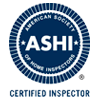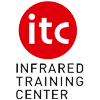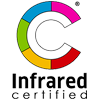Standards of practice glossary
Active fire protection and life safety components
Include automatic water sprinklers, standpipes, pull stations, smoke and heat detectors, telephone communication, special elevators and the installation of smoke control and smoke exhaust systems.
Attic space
The space between the ceiling of the highest floor and the roof or a knee wall.
Automatic safety controls
Any device designed and installed to protect systems and components from excessively high or low pressures and temperatures, excessive electrical current, loss of water, loss of ignition, fuel leaks, fire, freezing, or other unsafe conditions.
Basement
One or more floor of a building located under the first floor.
Central air conditioning:
A system which uses ducts to distribute cooled and/or dehumidified air to more than one room at once and which is not simply plugged into an electrical outlet.
Client
Person or organization for whom the report is being drafted, as per the agreement.
Component
A readily accessible and observable part of a system, such as a floor or wall. (The term does not apply to individual pieces such as boards or nails where many similar pieces make up the component.)
Crawl space
An empty space of low height between the floor of the lowest story and the ground, designed for the installation of technical components.
Dangerous or adverse conditions
Situations which pose a threat of injury to the inspector or which require the use of special protective clothing or safety equipment.
Decorative or non-permanent component
Individual component or accessory that is not part of or essential to a system or component of the building or the operation thereof, in particular alarm systems, motion detector or decorative lighting systems, antennae, lightning rods, flags or other.
Describe
Report on a system or component in writing by briefly indicating its type, its material or other observed characteristics with sufficient detail to distinguish it from other systems or components used for the same purpose. Example: “hot air furnace oil fed”; “kitchen cabinets of wood”.
Dismantle
To take apart or remove any component, device or piece of equipment that is bolted, screwed or fastened by other means and that would not be dismantled by a homeowner in the course of normal household maintenance.
Dwelling room
Furnished room used for living.
Dyke
Long structure used to contain, retain or stop water or water movement.
Engineering
Analysis or design work requiring extensive preparation and experience in the use of mathematics, chemistry, physics, and the engineering sciences.
Enter
To go into an area to observe all visible components
Faulty connection (problem or cross connection)
Any physical connection or arrangement between potable water and any source of contamination.
First floor
Highest floor whose floor is at a maximum of 2 m above average ground level.
Functional drainage
A drain is functional when it empties in a reasonable amount of time and does not overflow when another fixture is drained simultaneously.
Functional flow
A reasonable flow at the highest fixture in a dwelling when another fixture is operated simultaneously.
Geology
The scientific study and description of the different materials that the earth is composed of.
Household appliance
Any kitchen or laundry appliance, portable air conditioner or similar appliance.
Immediate repair
Repair which, if not done immediately, could result in a deterioration of the component, another component or system, or endanger the safety of the building’s occupants or other persons who have access.
Inspector
Any person who examines the components of a building, by visual means and through normal user controls, without the use of mathematical sciences.
Installed
Attached or connected to the building or to the building’s plumbing, mechanical or electrical systems in such a way that the installed item requires tools for removal.
Look at
To make a visual examination.
Major repair
A repair that is important by its nature, cost or consequences if not made.
Normal operating controls
Any homeowner operated device such as a thermostat, wall switch or safety switch.
Observe
To examine carefully, to observe, to note.
Operate
Take the necessary steps so that a system or equipment will function.
Organizational fire protection and life safety components
The prior organizing of emergency measures, evacuation procedures, maintenance schedules and regular verification of mechanical and electrical installations, and normal precautions for the storage of hazardous materials.
Passive fire protection and life safety components
Including the division of space, building’s fire resistance, firewalls, closures, interior finishes and means of evacuation.
Permanent windows and doors
Windows and/or exterior doors, which are designed to remain in place year round.
Readily operable access panel
A panel provided for homeowner inspection and maintenance, which has removable or operable fasteners or latch devices in order to be lifted off, swung open, or otherwise removed by one person, whose edges and fasteners are not painted in place. Limited to those panels within normal reach or from a 4-foot stepladder, and which are not blocked by stored items, furniture or building components.
Recreational facilities
Spas, saunas, steam baths, swimming pools, tennis courts, playground equipment, or other facilities for physical activity or entertainment facilities.
Representative number
One component per room if there are multiple identical components such as windows or electrical outlets. One component on each side of the building if there are multiple identical exterior components.
Roof drainage system
Gutters, downspouts, splash blocks and similar components used to carry water off a roof and away from a building.
Safety glazing
Tempered glass, laminated glass, or plastic material.
Service box
An assembly consisting of a metal box or cabinet constructed so that it may be effectively locked or sealed, containing either fuses and a switch for a circuit or a circuit breaker, and of such design that either the switch or circuit breaker may be manually operated when the box is closed.
Shut down
A piece of equipment or a system is shut down when it cannot be operated in a manner that a home owner would normally use. If the safety switch, circuit breaker or fuse is in the tripped position, the inspector is not required to operate the equipment or system.
Solid fuel burning heating device
Any wood, coal, or other similar organic fuel burning device, including but not limited to a fireplace (masonry or factory-built), fireplace insert, stove, central heat generator, etc.
Story
Portion of a building contained between the top surface of a floor and that of the floor immediately above it, or in its absence, by the ceiling above.
Structural component
A component of the building which provides support for interior or exterior cladding materials or supports other components of the building.
Supplemental heating device
Any devices or accessories added to supplement the main heating system, either to provide additional heat or to heat in case of failure of the system. Supplemental heating devices include, but are not limited to, all stoves and fireplaces, regardless of type of fuel or energy source used.
System
A combination of interacting or interdependent components, assembled to carry out one or more functions.
Technically exhaustive
An inspection is technically exhaustive when it is done by a specialist who may make extensive use of measurements, instruments, testing, calculations, and other means to develop scientific or engineering findings, conclusions, and recommendations.
Underground component
System or component buried in the ground inside or outside of the building, including sewer, foundation drain or underground oil tank, and that is not accessible without excavation or the use of a specialized tool.
Water supply quality
Quality of water supplied to the site. It depends on the bacterial, chemical, mineral salt, and solid material content of the water.
Water supply quantity
Quantity of water supplied to the site. It is based on rate of flow.









